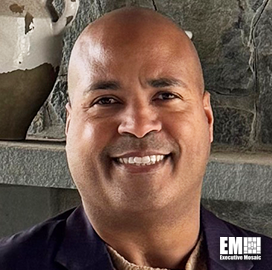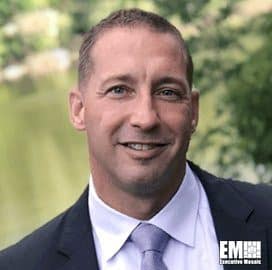
Mike Smith,
Managing Director,
Incrementium Advisors
Member Profile: Mike Smith, Managing Director of Incrementium Advisors
Mike Smith currently serves as managing director of Incrementium Advisors, where he leads the firm’s efforts to provide strategic and human capital consulting services for defense companies. His work is informed by his service in the U.S. Navy and more than two decades of experience in the defense industry.
In a recent interview with the Potomac Officers Club, Smith reflected on his career background, highlighted his leadership strengths and offered advice for industry newcomers.
Read the full interview below:
What can you tell us about your background and how you’ve been able to adapt to the ever-changing challenges of the federal landscape over the course of your career?
I’ve spent over 25 years as either an operator or as a member of the defense sector, and during that time I’ve purposefully moved between strategy and business development (S&BD) roles and profit and loss leadership. Though I consider S&BD to be “home plate,” I deeply appreciate the accountability and satisfaction of delivering capability to customers that P&L and programmatic roles provide.
I am grateful for having been given opportunities to work across a multitude of segments within the industry – from advanced munitions, shipbuilding, maintenance, repair and operations, combat vehicles, naval guns, howitzers, combat systems and sustainment services to systems engineering and technical assistance roles. In doing so, I have worked across the full product lifecycle – development, production, sustainment, modernization and ultimately retirement.
Geography has been another dimension of my career having lived overseas and pursued business in India, Australia, East Asia, South America and Europe. By no fault of my own, I have built adaptability into my career by taking on (or being thrust into) such a broad range of challenges.
What do you believe are your core strengths as a leader and what lessons taught you the most about driving success?
A piece of advice my dad gave me when I got commissioned was to become a leader I would want to work for. I’ve really taken that onboard as my leadership mantra. My Myers-Briggs Type Indicator is ENTJ with an off-the-charts ‘E.’ I am people-powered and truly enjoy the process of getting to know someone, hearing their aspirations and being a co-conspirator in your success. Human connection is the life-blood of my brand of leadership.
I think maintaining a natural sense of curiosity is another critical element. This one has admittedly been a journey for me. I’ve found that learning the right questions to ask, when to ask them and how to pose them is a bit of an art form (which doesn’t always come easy to an engineer). However, a questioning attitude has prevented many (but unfortunately not all) missteps in my career.
Next, while resilience may not be the key to success, it certainly is critical to longevity. When the capture team misses out on a down-select, when the technical solution fails verification and when a colleague makes an honest mistake is the exact time for the leader to step up, step in and embrace those failures. The idea of committing unique failures and learning from them is essential to determining pathways to success. The ones who own the lessons are the same people who now need to be uplifted. They need light, not heat. If leadership’s response causes the team to disengage, I guarantee that the failure will be repeated.
Last, those who know me know that I spent three years working in Sweden, which was long enough to come away with a favorite term: tillit. It means “trust,” and you’ll note that it’s a palindrome. This signifies that trust is a two-way exchange. When you’re a member of my team, you walk in with a high balance in my trust account. And yes, people will unfortunately make withdrawals and just as importantly they can also make deposits. But they can’t bounce checks.
How would you advise someone entering our industry to build their resume and advance their careers to be in the best position in the years to come?
One of my favorite talks with folks who are just setting out into the industry is around career pathing. I try to create a visual of two vectors marking an intersection. One vector symbolizes the company’s growth strategy whereas the other represents one’s professional aspirations. The strategy broadly defines the steps the company will take to fulfill its value creation commitments to its owners. Your personal vector defines what you want to achieve professionally. The intersection of the two is where you want to be. This means you not only need to understand the nuts and bolts of the company’s strategy, but also you will need to go through a process of self-discovery to determine your specific strengths and goals. If you are sitting at the intersection, you can be assured that the work you are doing each day is adding value to the company.
I have several examples that bring the concept home. For instance, early in my career, I conducted a global analysis of the land systems segment indicating substantial growth in the Indian market. When the company was looking for someone to stand up a joint venture in Delhi to pursue land systems opportunities, I was first in line. I had never formed a joint venture of any sort but recognized that the experience would be an arrow in my quiver. At the time, international growth was one of several pillars of the company’s strategy and this very specific opportunity was completely aligned with how the enterprise was seeking new growth.
If your career came to an end tomorrow, what would you say have been the most significant accomplishments of your career? Where do you feel you made the most impact?
When it’s time for the curtain to fall, I want to grab a front-row seat in the audience and watch those I mentored take the stage. Many of them are far more talented than I, so I have unflinching faith in their collective ability to carry our industry through turbulence and uncertainty. Like I said before, I am people-powered and engaging with young professionals – especially those who are unsure of their next steps – to be invigorating. I have had many, many mentors through these 25 short years, so I understand the value that outside perspectives can provide. I’ll have my popcorn ready!

Category: Executive Profiles




